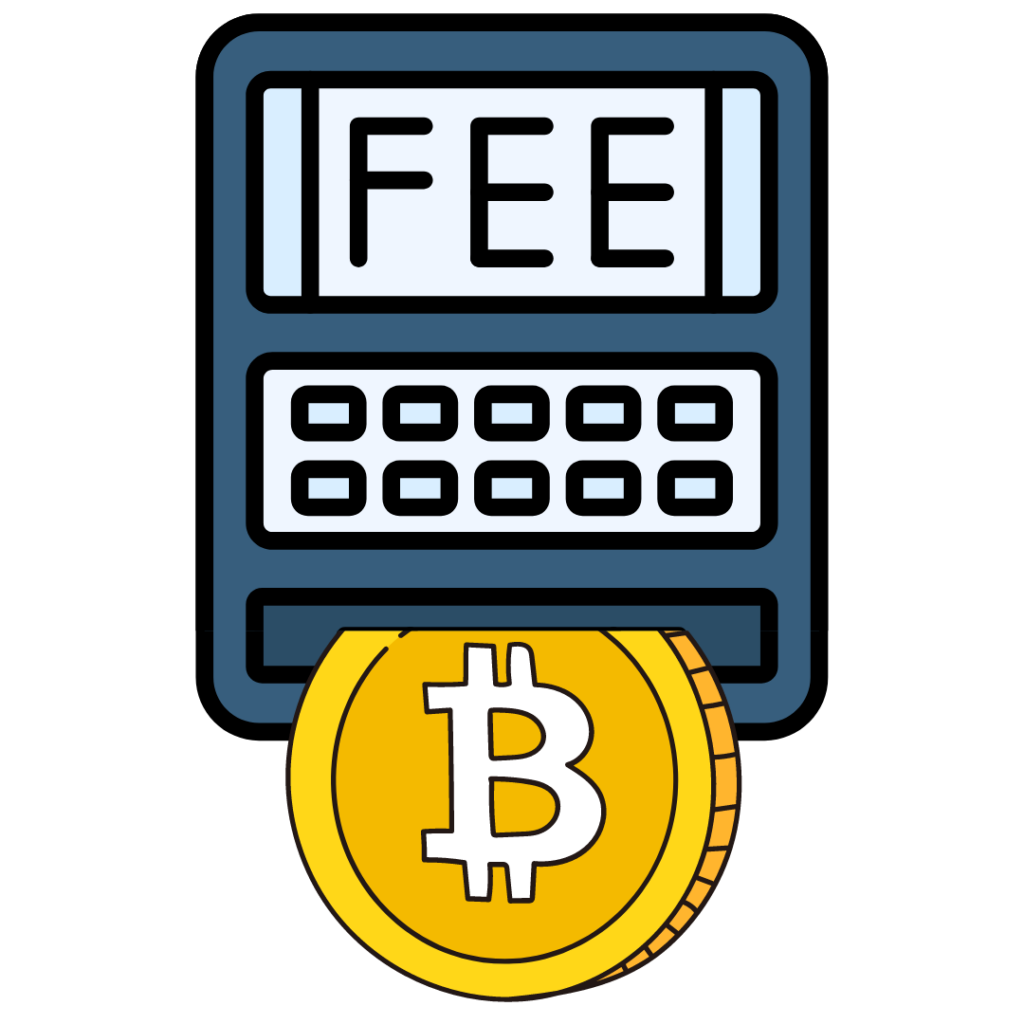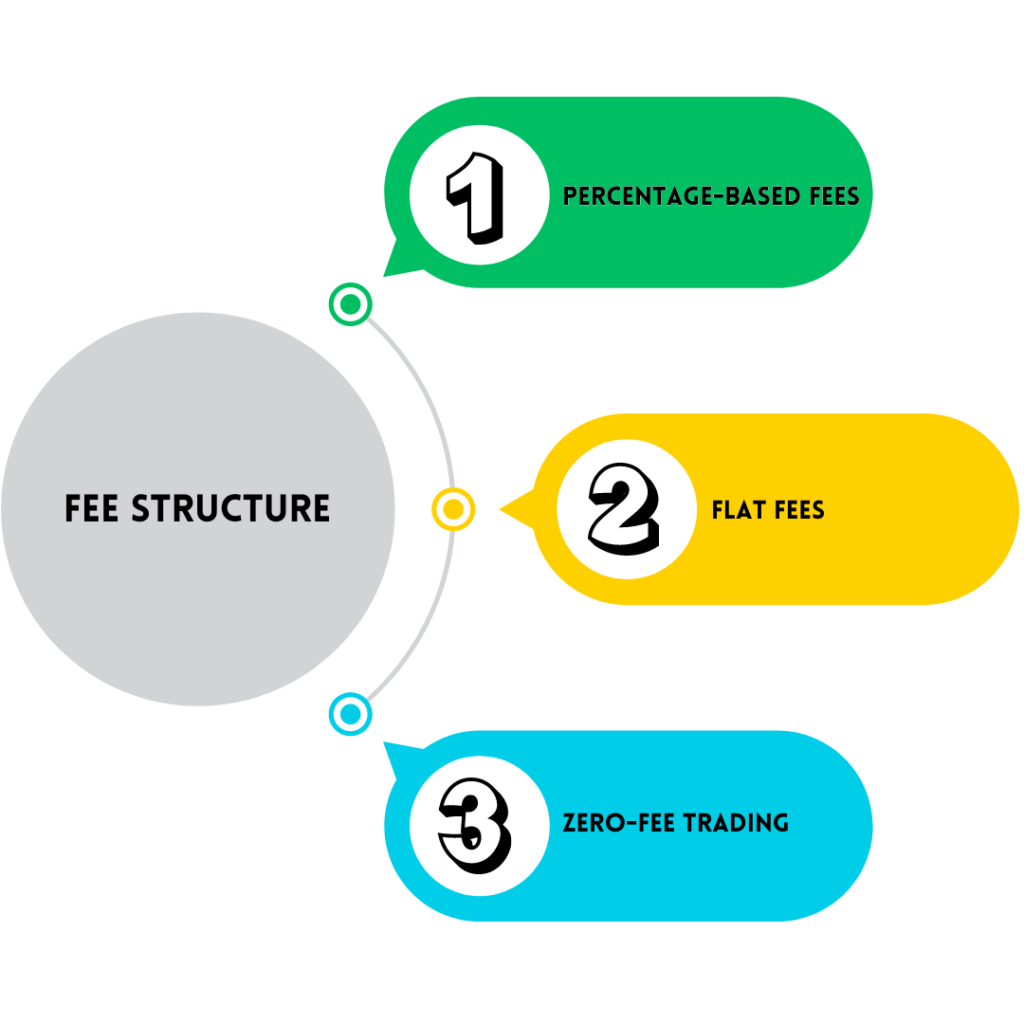Crypto Fees Explained: Pay Now, Save Later!
Crypto fees mainly include transaction fees and exchange fees, along with some hidden costs, like spread costs, slippage costs, inactivity fees, etc.
These are charges associated with various crypto transactions, including trading, withdrawals, and conversions. Crypto traders and investors must understand these fees because they directly impact the profitability of their trades. Knowing the types and structures of fees allows you to make informed decisions, minimize expenses, and maximize returns.
In this guide, we will explain the different types of crypto fees, hidden costs, and how paying crypto fees can ultimately save you money.
Types of Crypto Fees and Costs

When it comes to crypto fees, we can broadly categorize them into two main types: crypto transaction fees and exchange fees. These categories include various smaller costs, and we’ll break them down in the upcoming sections.
Crypto Transaction Fees
These are the small charges for sending or receiving crypto over a blockchain network. These fees facilitate the security and efficiency of blockchain networks in the following ways:
1. Incentivizing Miners
Miners validate and add transactions to the blockchain and transaction fees act as incentives for miners, motivating them to prioritize and process transactions promptly. Higher fees mean quicker processing, a win-win for all parties involved.
2. Preventing Spam and Attacks
Without transaction fees, blockchain networks would be vulnerable to spam and malicious attacks. These fees act as a barrier, discouraging users from clogging the network with unnecessary or fraudulent transactions.
Breaking Down Transaction Fees
Transaction fees are typically composed of two primary components:
1. Network Fee (Gas Fee): This fee covers the computational work required to process and validate a transaction. Its cost varies depending on the network and the complexity of the transaction. For instance, Ethereum uses “gas” as a unit of measurement for computational work.
Check out our guide on reducing Ethereum gas fees for more details.
2. Priority Fee: Some networks, like Bitcoin, allow users to choose a priority fee, determining the transaction speed. The higher the priority fee, the faster your transaction goes through.
How to Check and Calculate Transaction Fees
For crypto traders and investors, knowing how to check and calculate transaction fees is essential. Here is how you can do it:
1. Wallet or Exchange: Most wallets and exchanges display an estimated transaction fee before you hit “send.” It’s usually based on the current network conditions, so you will have a rough idea of what you’re paying.
2. Blockchain Explorer: You can also use blockchain explorers to check real-time data on transaction fees for a specific network. They help you gauge the appropriate fee for your transaction.
Crypto Exchange Fees
When you buy, sell, or trade cryptocurrencies on crypto exchanges, you pay exchange fees to these platforms for acting as middlemen and facilitating various transactions. Considering crypto exchange fees is crucial, especially for crypto traders, as these fees can significantly affect their profits.
Exchange fees fall into four categories:
1. Trading Fees: When you make trades on an exchange, you pay these fees. They come in two flavors:
- Maker Fees: If you place an order that doesn’t get matched right away (a limit order), you’re a maker. Maker fees often lower and encourage users to make the market more liquid.
- Taker Fees: When you place an order that gets matched immediately with an existing one (a market order), you’re a taker. Taker fees are usually higher and ensure quick order execution.
2. Withdrawal and Deposit Fees: Some exchanges charge fees for depositing or withdrawing cryptocurrencies. These fees depend on the cryptocurrency and the platform.
3. Margin Trading Fees: If an exchange offers margin trading, there might be additional fees for leveraging your trades.
Different Fee Structures Used by Popular Exchanges:

Crypto exchanges have diverse fee structures, and it’s essential to grasp these differences:
1. Percentage-Based Fees: Platforms like Coinbase and Gemini charge a percentage of your total transaction value as a fee. These fees are common in spot trading and often vary based on your trading volume.
2. Flat Fees: Exchanges like KuCoin charge a fixed fee for every trade, regardless of transaction size. This structure works well for smaller trades.
3. Zero-Fee Trading: A few platforms, like Phemex and Lykke, offer zero-fee trading to lure users. However, be cautious, as they may compensate for it with a lack of features and less favorable exchange rates or hidden costs.
Here is a one-stop tool to compare the fee structures of different exchanges based on different variations.
Hidden Crypto Fees and Costs
We’ve discussed the typical and easily noticeable crypto fees and their types. Yet, lurking beneath the surface, there are less apparent hidden fees that are eating off your profits without you knowing.
There are sneaky, hidden crypto fees and costs that can nibble away at your crypto wallet without you even realizing it. These mostly go unnoticed unless you’ve already felt their sting. Make sure that doesn’t happen to you.
1. Spread Costs
Imagine buying a cryptocurrency at one price and selling it at another. That price difference is called the “spread.” It’s like a hidden fee that goes to the exchange. It’s the cost of doing business, and it’s usually not transparent. The broader the spread, the higher you pay.
2. Slippage Costs
Slippage is what happens when the price at which you want to buy or sell doesn’t match the price at which the trade gets executed. It’s like a silent auctioneer raising the price while you’re not looking. This can result in hidden costs, especially with large orders or less popular assets. Using limit orders can help you control slippage costs by setting your desired price.
3. Exchange Rate Variability
The exchange rate you see might not be the one you get. There can be a tiny difference between the rate an exchange quotes you and the actual market rate. That little variation can add up, making it another hidden cost.
4. Conversion Fees
If you’re swapping one crypto for another, there could be a conversion fee hiding in the background. Some exchanges include this fee in the exchange rate, while others show it separately.
5. Inactivity Fees
Forget about your crypto exchange account for too long, and you might have to pay inactivity fees. Some exchanges charge these fees if your account remains unused for a specific period. They often don’t actively caution their users about this, so it’s essential to stay active or check the platform’s policies.
6. Overnight Financing Fees
For those venturing into leveraged or margin trading, watch out for overnight financing fees, also known as “swap” or “rollover” fees. These fees kick in when you hold leveraged positions overnight. They might seem small at first, but they can add up over time.
Utilize Crypto Fees to Lower Taxes
Here is a valuable tax-saving tip: in some cases, you can deduct transaction fees as expenses when calculating your capital gains or losses. By doing so, you can reduce your overall tax liability. Keep in mind that the rules for these deductions can vary by jurisdiction.
Check your local crypto tax guidelines and consult with a professional to determine if this is applicable to your specific case.